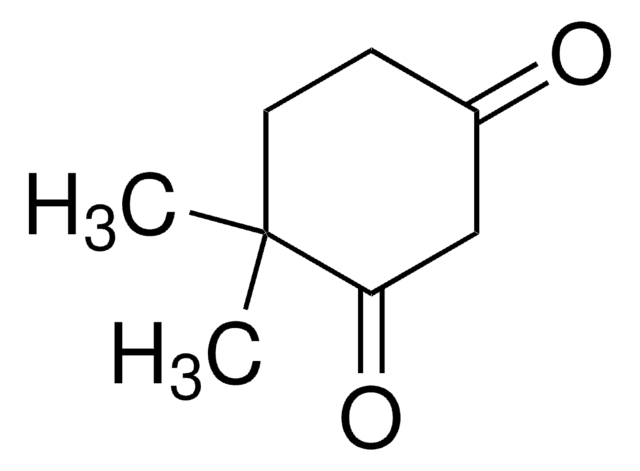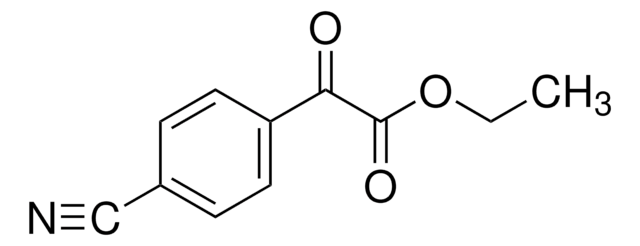All Photos(1)
About This Item
Linear Formula:
CH3COCH2CONHC6H4Cl
CAS Number:
Molecular Weight:
211.64
EC Number:
MDL number:
UNSPSC Code:
12352100
PubChem Substance ID:
NACRES:
NA.22
Recommended Products
Assay
98%
form
powder
mp
131-134 °C (lit.)
solubility
acetone: soluble 25 mg/mL, clear, colorless to light yellow
SMILES string
CC(=O)CC(=O)Nc1ccc(Cl)cc1
InChI
1S/C10H10ClNO2/c1-7(13)6-10(14)12-9-4-2-8(11)3-5-9/h2-5H,6H2,1H3,(H,12,14)
InChI key
JMRJWEJJUKUBEA-UHFFFAOYSA-N
General description
4′-Chloroacetoacetanilide was trilithiated with lithium diisopropylamide and condensed with several aromatic esters, followed by neutralization, separate acid cyclization and rearrangements to yield 4-anilino-6-aryl-2H-pyran-2-ones. It undergoes three-component reaction with a mixture of aromatic aldehyde and 5-aminotetrazole to form N,7-diaryl-5-methyl-4,7-dihydrotetrazolo[1,5-a]pyrimidine-6-carboxamide.
Application
4′-Chloroacetoacetanilide was used in recombinant androgen receptor competitive binding assay for analysis of natural, synthetic and environmental chemicals.
Storage Class Code
13 - Non Combustible Solids
WGK
WGK 1
Flash Point(F)
Not applicable
Flash Point(C)
Not applicable
Personal Protective Equipment
dust mask type N95 (US), Eyeshields, Gloves
Certificates of Analysis (COA)
Search for Certificates of Analysis (COA) by entering the products Lot/Batch Number. Lot and Batch Numbers can be found on a product’s label following the words ‘Lot’ or ‘Batch’.
Already Own This Product?
Find documentation for the products that you have recently purchased in the Document Library.
Synthesis and antimicrobial activity of n, 7-diaryl-5-methyl-4, 7-dihydrotetrazolo [1, 5-a] pyrimidine-6-arboxamides.
Gein VL, et al.
Pharmaceutical Chemistry Journal, 44(7), 366-369 (2010)
Preparation of 4-anilino-6-aryl-2 H-pyran-2-ones from trilithiated acetoacetanilides and aromatic esters.
Downs JR, et al.
Canadian Journal of Chemistry, 82(5), 659-664 (2004)
Hong Fang et al.
Chemical research in toxicology, 16(10), 1338-1358 (2003-10-21)
A number of environmental and industrial chemicals are reported to possess androgenic or antiandrogenic activities. These androgenic endocrine disrupting chemicals may disrupt the endocrine system of humans and wildlife by mimicking or antagonizing the functions of natural hormones. The present
Our team of scientists has experience in all areas of research including Life Science, Material Science, Chemical Synthesis, Chromatography, Analytical and many others.
Contact Technical Service








![[(3R)-3-Hydroxydodecanoyl]-L-carnitine analytical standard](/deepweb/assets/sigmaaldrich/product/structures/307/615/dadd9469-b690-4f3b-8106-1471f02b2385/640/dadd9469-b690-4f3b-8106-1471f02b2385.png)